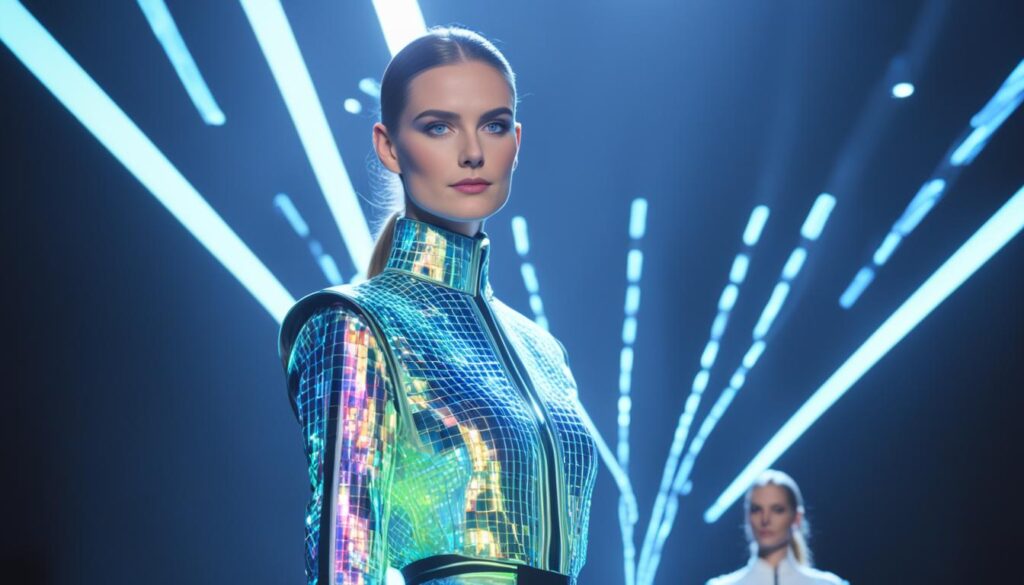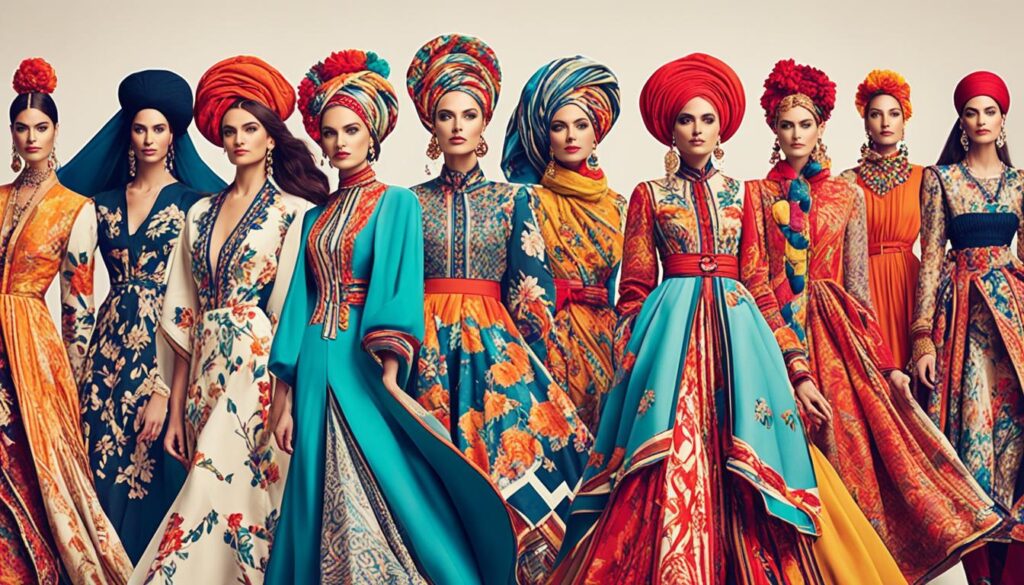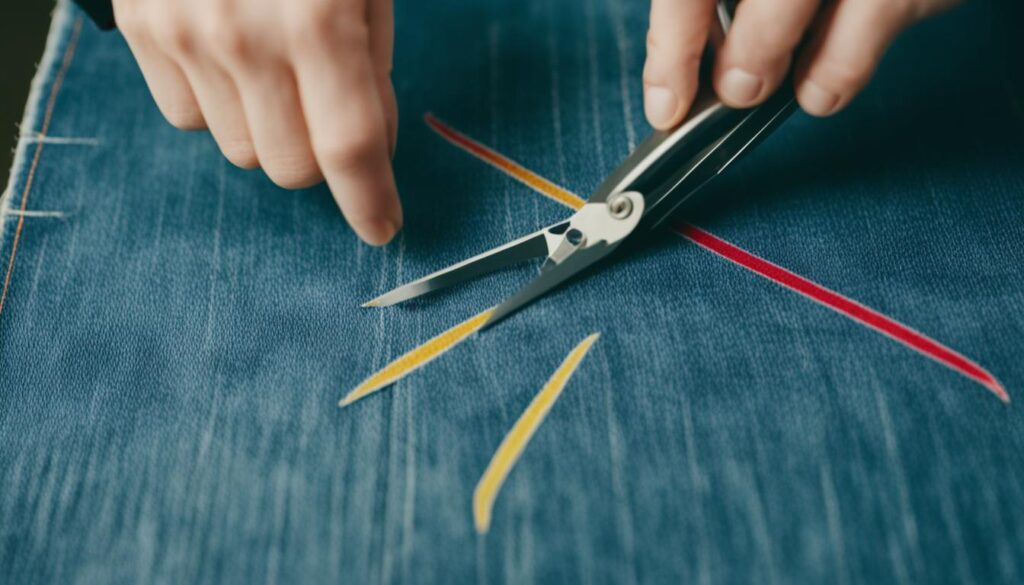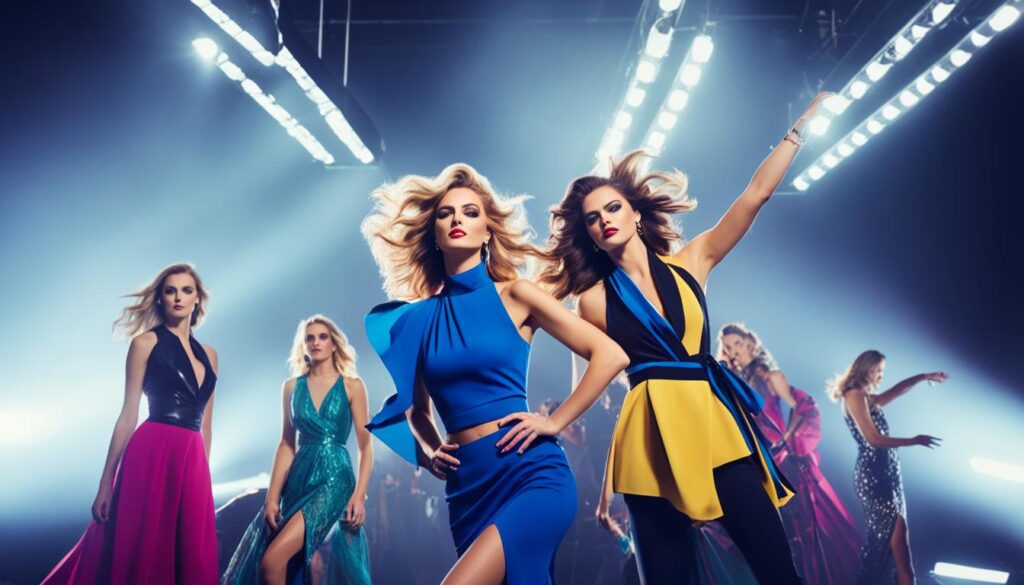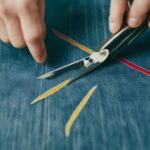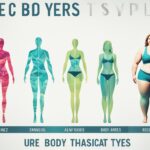The fashion industry is evolving at a rapid pace, thanks to the integration of technology. In today’s digital age, fashion brands are embracing innovative solutions to meet the demands of consumers and stay ahead of the competition. From artificial intelligence to novel fabrics and the Internet of Things, fashion technology is shaping the future of the industry.
Artificial intelligence (AI) is revolutionizing the way fashion brands operate. AI-powered chatbots and touchscreens enhance the shopping experience by providing personalized product suggestions and guidance. Additionally, AI plays a vital role in trend forecasting and supply chain management, helping brands make data-driven decisions.
Novel fabrics are offering sustainable and cutting-edge options in the fashion industry. Startups are creating lab-grown leather and innovating with super-strong spider silk, while smart textiles infused with nanotechnology provide advanced features like temperature control and moisture-wicking.
The Internet of Things (IoT) is connecting fashion objects embedded with technology, allowing for data exchange and personalized experiences. Wearable gadgets and apparel technology are continually improving, offering virtual try-on experiences and more relevant marketing campaigns.
Virtual try-on apps are transforming online shopping, providing customers with accurate 3D representations of how clothes fit their bodies. These apps offer a convenient and personalized shopping experience, reducing the risk of buying ill-fitting items.
The fashion industry will continue to witness advancements in technology, leading to improved customer experiences, inventory management, and overall innovation. As technology evolves, it will play a crucial role in driving the future of fashion.
Key Takeaways:
- Fashion technology is rapidly evolving, with AI, novel fabrics, and the IoT at the forefront.
- Artificial intelligence enhances the shopping experience, trend forecasting, and supply chain management in the fashion industry.
- Novel fabrics provide sustainable alternatives and advanced features, such as temperature control and moisture-wicking.
- The IoT connects fashion objects and enables personalized experiences through wearable gadgets and virtual try-on apps.
- Virtual try-on apps offer an accurate representation of how clothes fit the customer’s body and provide a convenient shopping experience.
Artificial Intelligence in Fashion
Brands in the fashion industry are embracing the power of artificial intelligence (AI) to revolutionize the shopping experience and drive innovation. By utilizing AI, fashion companies can analyze data, forecast trends, and provide personalized recommendations to customers. AI-powered chatbots and touchscreens have become common features in stores, enhancing customer service and offering tailored product suggestions. The impact of AI extends beyond the sales floor, as it plays a vital role in trend forecasting and supply chain management.
One example of a fashion technology company leveraging AI is Stitch Fix. Using machine learning algorithms, Stitch Fix analyzes customer data to curate personalized styling recommendations. This AI-driven approach has allowed the company to deliver a unique and convenient shopping experience for its customers.
Another notable player in the fashion tech industry is TrueFit. TrueFit utilizes AI to provide accurate sizing predictions to online shoppers. By analyzing a customer’s data along with patterns from millions of other users, TrueFit helps customers find the perfect fit when shopping online, reducing the likelihood of returns and improving customer satisfaction.
“AI-powered chatbots and touchscreens are transforming the retail experience, providing customers with personalized assistance and recommendations.”
The integration of AI in the fashion industry is not only enhancing the customer experience but also improving inventory management and forecasting. Brands can now make informed decisions about styles and quantities, reducing wastage and optimizing the supply chain.
How AI is shaping the future of fashion:
- Enhanced customer experiences through personalized recommendations
- Improved inventory management and supply chain optimization
- Predictive analytics for trend forecasting
- Efficient data analysis to guide decision-making
With AI as a driving force, fashion technology solutions are empowering brands to adapt to the evolving needs of consumers. As the fashion industry continues to embrace AI technologies, the future of fashion is set to become even more personalized, efficient, and innovative.
Novel Fabrics in Fashion
Novel fabrics are revolutionizing the fashion industry, offering sustainable options and cutting-edge features. These innovative textiles are pushing the boundaries of fashion and paving the way for a more sustainable future. From lab-grown leather to spider silk, fashion brands are embracing these novel fabrics to create unique designs that are both eco-friendly and stylish.
One such brand leading the way in sustainable fashion innovation is Modern Meadow. They have developed a process to create lab-grown leather without the need for animal farming. This breakthrough technology not only eliminates the need for animal cruelty but also reduces the environmental impact of traditional leather production.
Bolt Threads and EntoGenetics are also making waves in the industry with their development of super-strong spider silk. By harnessing the power of nature, these companies are creating fabrics that are not only incredibly durable but also sustainable. Spider silk has the potential to replace traditional materials in various applications, from apparel to industrial use.
Smart textiles are another area of fashion innovation that is gaining traction. These fabrics are infused with nanotechnology or conductive threads, allowing them to have advanced features like temperature control, moisture-wicking, and even activity monitoring. By incorporating technology into fabrics, brands can offer consumers garments with added functionality and comfort.
3D printing technology is also transforming fabric design by enabling the creation of unique and customized textiles. With 3D printing, fashion designers can push the boundaries of traditional garment construction and create intricate patterns and textures that were previously impossible. This technology allows for greater creativity and personalization in fashion, empowering both designers and consumers.
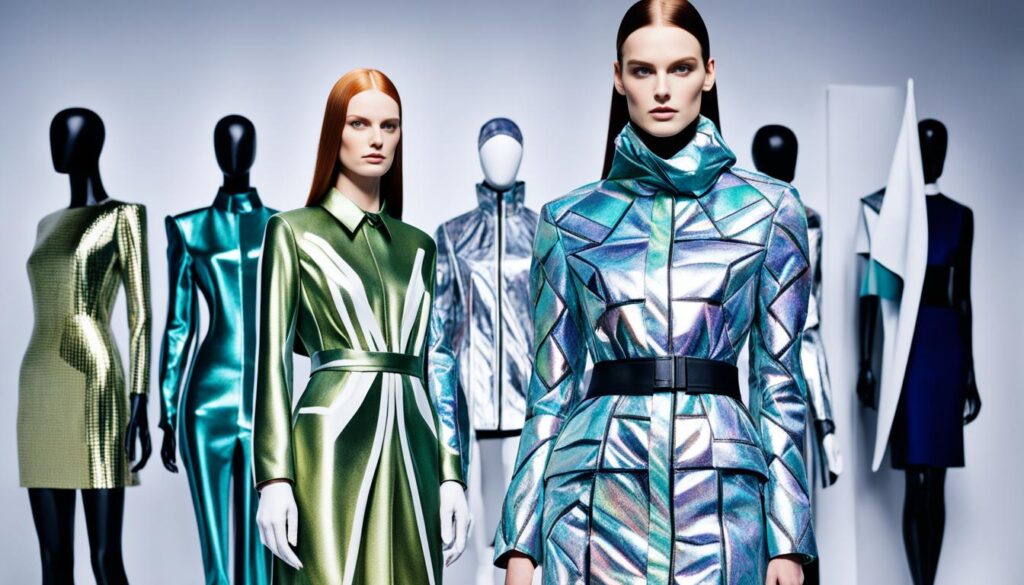
Novel Fabrics in Fashion
| Fabric | Innovation | Key Features |
|---|---|---|
| Lab-grown leather | Modern Meadow | Sustainable alternative to traditional leather |
| Spider silk | Bolt Threads, EntoGenetics | Super-strong and sustainable fabric |
| Smart textiles | Various brands | Nanotechnology-infused or conductive threads for added functionality |
| 3D printed fabrics | Various brands | Unique and customized designs |
Internet of Things in Fashion
The Internet of Things (IoT) is revolutionizing the fashion industry, bringing together technology and fashion to create exciting possibilities. IoT connects objects embedded with technology, allowing them to exchange data over the internet. This interconnectivity opens up a world of opportunities in the fashion market.
One of the key areas where IoT is making a significant impact is in wearable gadgets. These innovative devices are continually improving to meet the demands of tech-savvy consumers. From smartwatches and fitness trackers to smart jewelry, wearable gadgets have become fashion accessories that seamlessly integrate with our daily lives.
But it’s not just about gadgets. The integration of IoT in fashion extends to apparel technology as well. AI-enabled chatbots have transformed the online shopping experience by providing personalized recommendations and assistance, making fashion accessible and convenient.
In addition, virtual try-on apps have become increasingly popular, enabling customers to visualize how clothes fit and look without physically trying them on. This technology provides accurate representations, ensuring a more confident and satisfying online shopping experience.
“IoT has paved the way for more relevant marketing campaigns and greater personalization in the fashion industry.”
The integration of IoT in fashion has not only enhanced the consumer experience but also empowered brands to create more relevant marketing campaigns. By leveraging data collected through IoT devices, fashion tech companies can gain valuable insights into consumer behavior, preferences, and trends, enabling them to tailor their marketing efforts and offer personalized products and promotions.
With the continued advancements in IoT, the future of fashion is full of possibilities. From smart fabrics with embedded sensors to interactive dressing rooms that offer style suggestions, the intersection of technology and fashion is pushing boundaries and creating new opportunities for innovation.
Benefits of IoT in Fashion:
- Enhanced consumer experience through wearable gadgets and apparel technology
- Personalized recommendations and virtual try-on apps
- More relevant marketing campaigns and greater personalization
- Innovative possibilities for the future of fashion
Virtual Try-on Apps in Fashion
Virtual try-on apps are revolutionizing the online shopping experience by leveraging the power of AI and computer vision technology. These apps provide customers with an accurate 3D representation of how clothes fit their bodies, creating a personalized and immersive shopping experience. By trying on clothes virtually, shoppers can make informed decisions without leaving the comfort of their own homes, reducing the risk of purchasing ill-fitting or unsatisfactory items.
Virtual try-on apps also play a vital role in creating more inclusive collections. By allowing customers to see how clothes fit on different body types, these apps promote diversity and help brands cater to a wider range of customers. This technology empowers shoppers to confidently explore fashion trends and styles that align with their personal preferences and body shape.
Furthermore, virtual try-on apps enhance the convenience of online shopping by providing a seamless and personalized experience. Customers can visualize how different items of clothing blend together, experiment with various styles, and easily compare options. This interactive approach not only streamlines the decision-making process but also makes shopping more enjoyable and engaging.
Embracing virtual try-on apps is beneficial for both consumers and fashion brands alike. For customers, it offers a convenient and risk-free way to explore and try on clothing virtually. For brands, it provides valuable data on customer preferences and enables them to offer personalized recommendations for each shopper. With the integration of virtual try-on apps, the future of online shopping is becoming more immersive, interactive, and customer-centric.
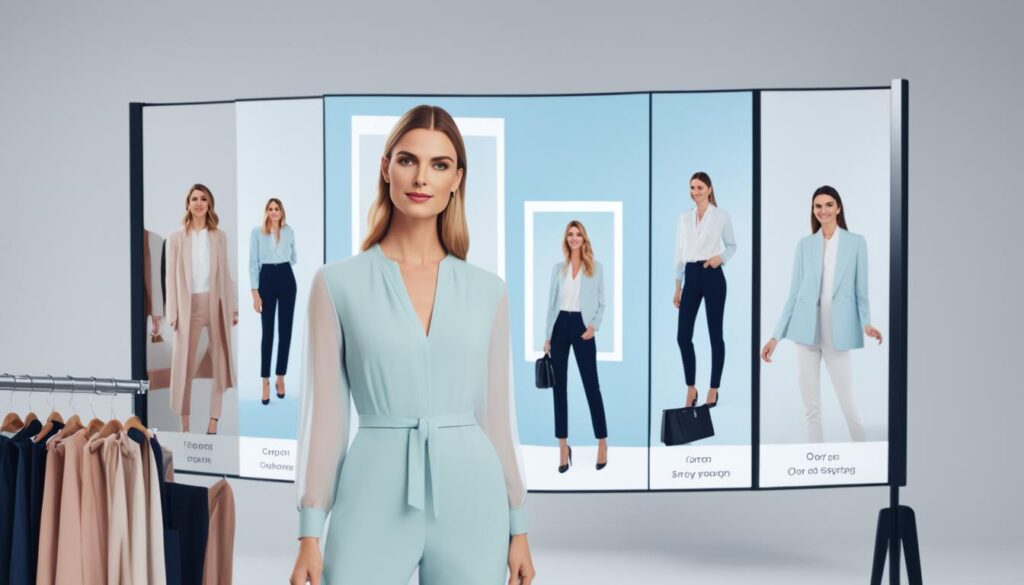
| Benefits of Virtual Try-on Apps in Fashion |
|---|
| 1. Enhanced online shopping experience |
| 2. Accurate 3D representation of clothes |
| 3. Reduced risk of purchasing ill-fitting or unsatisfactory items |
| 4. Promotion of inclusivity in fashion |
| 5. Streamlined decision-making process |
| 6. Convenience and personalized shopping experience |
| 7. Valuable data for brands and personalized recommendations |
Advancements in Fashion Technology
The fashion industry is at the forefront of technological advancements, constantly pushing the boundaries of innovation. Here are some of the latest fashion technology trends that are shaping the industry.
1. 5G Technology for Live Streaming and Virtual Showrooms
The introduction of 5G technology has revolutionized the way fashion shows and events are broadcast. With its lightning-fast speed and low latency, 5G enables seamless live streaming, bringing the experience of fashion shows to a global audience. Additionally, fashion brands are leveraging 5G to create immersive virtual showrooms, allowing customers to explore collections and make purchases from the comfort of their homes.
2. AI-powered Trend Forecasting
Artificial intelligence (AI) has become an indispensable tool for fashion brands in trend forecasting. AI algorithms analyze vast amounts of data, such as social media posts, online shopping patterns, and consumer behavior, to predict future fashion trends accurately. This invaluable insight helps designers and brands stay ahead of the curve, enabling them to create on-trend collections that resonate with their target audience.
3. Image Recognition Technology for Style Prediction
Image recognition technology is transforming the way consumers discover and shop for fashion. By analyzing visual elements such as colors, patterns, and silhouettes, AI-powered image recognition algorithms can match a customer’s desired style with similar clothing items. This technology provides personalized recommendations, making it easier for shoppers to find the perfect outfit.
4. Enhanced Customer Experience and Inventory Management
Fashion brands are leveraging technology to enhance the customer experience and streamline inventory management. Virtual fitting rooms equipped with AI and augmented reality (AR) technologies enable customers to try on clothes virtually, eliminating the need for physical fitting rooms and reducing returns. Additionally, data analytics tools powered by AI help brands optimize inventory management by providing insights on customer preferences, demand patterns, and supply chain efficiency.
These advancements in fashion technology have paved the way for a more personalized and seamless shopping experience. By harnessing the power of AI, image recognition, and 5G technology, fashion brands are staying ahead of the competition and meeting the evolving needs of consumers.
| Advancements in Fashion Technology | Benefits |
|---|---|
| 5G Technology for Live Streaming and Virtual Showrooms | – Global reach for fashion shows and events – Enhanced accessibility for virtual shopping – Improved customer engagement |
| AI-powered Trend Forecasting | – Accurate prediction of fashion trends – More targeted and effective marketing strategies – Reduced risk and increased profitability |
| Image Recognition Technology for Style Prediction | – Personalized shopping recommendations – Faster and more efficient product discovery – Enhanced customer satisfaction |
| Enhanced Customer Experience and Inventory Management | – Virtual fitting rooms for convenient try-ons – Optimized inventory levels and reduced costs – Improved supply chain efficiency |
Conclusion
The future of fashion technology is bright, as the industry continues to embrace innovative advancements in AI, novel fabrics, and the Internet of Things. These transformative technologies are driving fashion industry innovation, offering sustainable options, personalized shopping experiences, and improved inventory management.
With the ongoing evolution of technology, the future of fashion tech holds exciting possibilities. AI-powered solutions enable brands to analyze data, forecast trends, and provide personalized recommendations to customers. Novel fabrics, such as lab-grown leather and smart textiles, offer sustainable and cutting-edge features, while 3D printing revolutionizes fabric design.
The Internet of Things is revolutionizing the fashion market, connecting wearable gadgets and apparel technology to provide a more seamless, personalized shopping experience. Virtual try-on apps, powered by AI and computer vision technology, are transforming the way consumers shop online, enabling them to try on clothes virtually and make more confident purchases.
As technology continues to evolve, fashion tech will continue to play a crucial role in shaping the future of the fashion industry. It will drive innovation, meeting the demands of the modern consumer and empowering brands to stay ahead of the competition. Stay tuned for more exciting developments in fashion technology trends!

